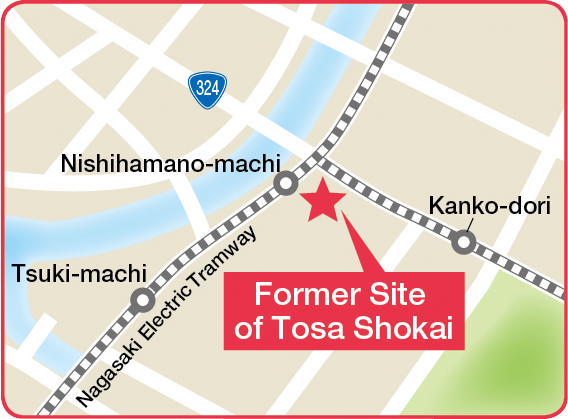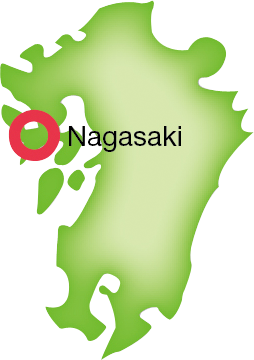Our Roots A history of rising to the challenge vol.6
Yataro & Ryoma—Sharing a Common Dream
We focus on Mitsubishi founder Yataro Iwasaki's ties with Ryoma Sakamoto, an influential figure in the days leading up to the Meiji Restoration.

In 1867, Yataro was assigned to the Tosa Clan's trading office in Nagasaki, where he assisted Shojiro Goto, who had become an influential official.
Yataro worked to raise funds for Tosa while also procuring steamships, weapons and ammunition. He also supported the activities of the Kaientai, a private navy and trading company founded by Ryoma, and that is how Yataro and Ryoma first met. While they took very different paths, Yataro and Ryoma shared a similar awareness of a larger world and a focus on the Japan of tomorrow. After meeting Ryoma, Yataro wrote: "We drank some sake´ and had an amicable conversation. I shared ideas I'd been thinking about for some time and Ryoma enthusiastically expressed his agreement." The pair must have discovered they had some things in common—perhaps they talked about their dreams of venturing out into the world one day.
Meanwhile, Japan was on the brink of war as influential clans were preparing to oust the ruling shogunate. Yodo Yamauchi*, the head of the Tosa Clan, and other leaders gathered for talks in Kyoto. Various plans were discussed, but no consensus was reached. Yodo decided to seek advice from Shojiro and Ryoma so the pair quickly set out for Kyoto. Yataro watched as they departed from Nagasaki. On June 9, 1967, Yataro wrote: "The ship set sail at 2 PM. We all saw it off. Tears suddenly came to my eyes as they sailed off."
It was during this voyage that Ryoma finalized his Eight Point Plan. In addition to returning power to the Imperial Court, the plan also called for the creation of legislative houses through which government policies would be decided. It was a blueprint for a new Japan. The plan was passed along to Yodo by Shojiro. Yodo then presented the shogun, Yoshinobu Tokugawa, with a written memorial, which sparked a chain of events that culminated in the transfer of power to the Emperor and what we now know as the Meiji Restoration.
Meanwhile in Nagasaki, Yataro had been left in charge of the clan's business affairs, including matters involving the Kaientai. A ship operated by the Kaientai had sunk after a collision with a ship owned by another clan. After intense negotiations, Yataro managed to secure substantial restitution for the sunken ship. Furthermore, when samurai from Tosa were falsely implicated in the murder of two foreign sailors, Yataro stood up to the British Consul and staunchly assured him of their innocence.
On December 10, 1867, Ryoma was assassinated in Kyoto by members of a pro-shogunate group. After completing his plan for a new Japan, Ryoma had dreamed of sailing the seven seas. While he wasn't able to pursue this dream, Ryoma's passion for building a new Japan was carried on by others. Meanwhile, Yataro seemed to take up Ryoma's ambitions as he went on to develop business globally while contributing to the development of modern industry in Japan.
* Also known as Toyoshige Yamauchi


Retracing Yataro's Footsteps:Tosa Shokai in Nagasaki
During the Edo period, trade with European nations was only permitted in Nagasaki. The base for the Tosa Clan's economic activities in Nagasaki was the Nagasaki Branch of Tosa Shokai. While serving as the 2nd head of the branch, Yataro was able to broadly demonstrate his talents. A monument marking the former site of Tosa Shokai still stands in Nagasaki City, near the entrance to the Hamano-machi Shopping Arcade. Because Tosa Shokai provided financial support to Ryoma Sakamoto's Kaientai, the monument also states that it marks the birthplace of the Kaientai.